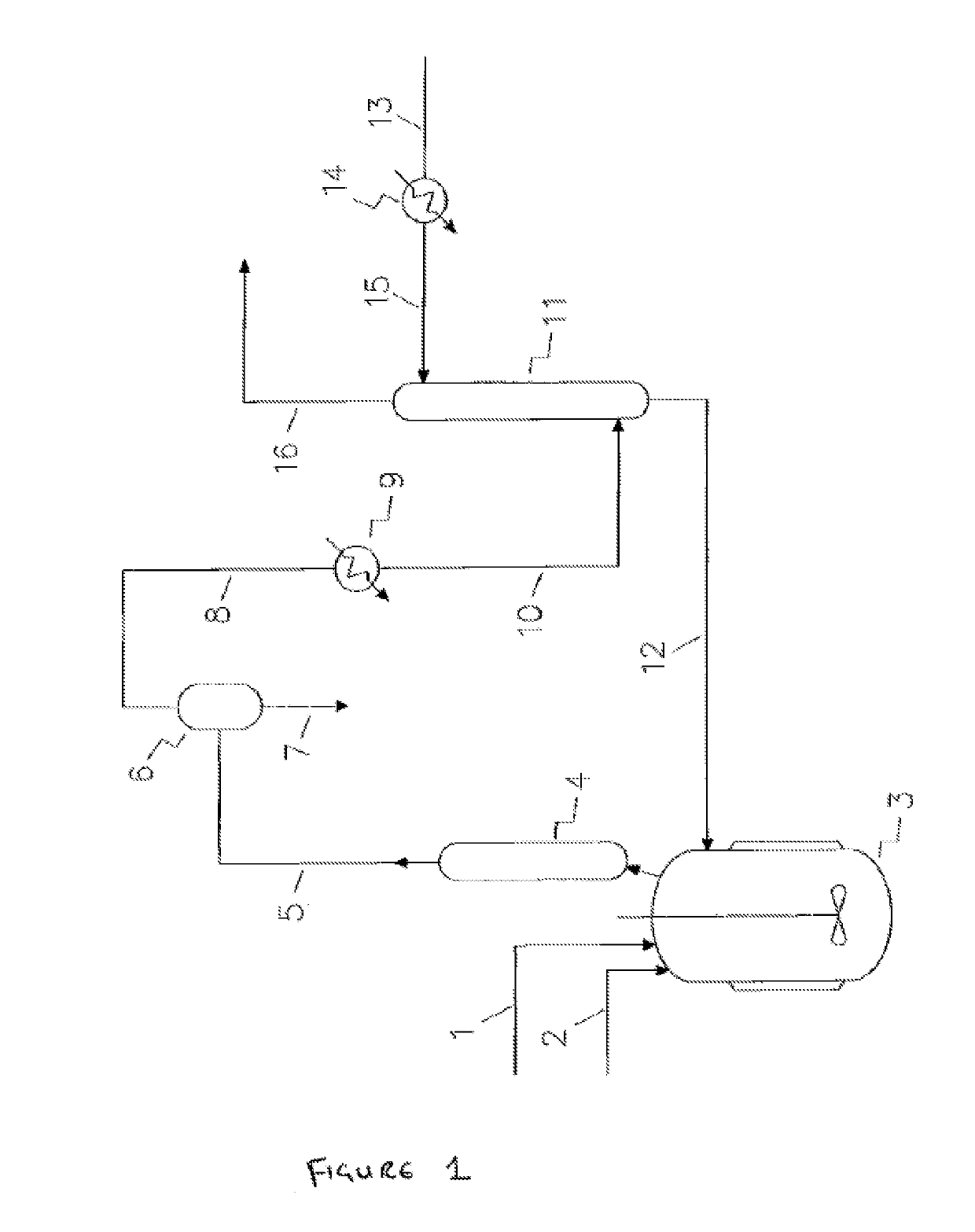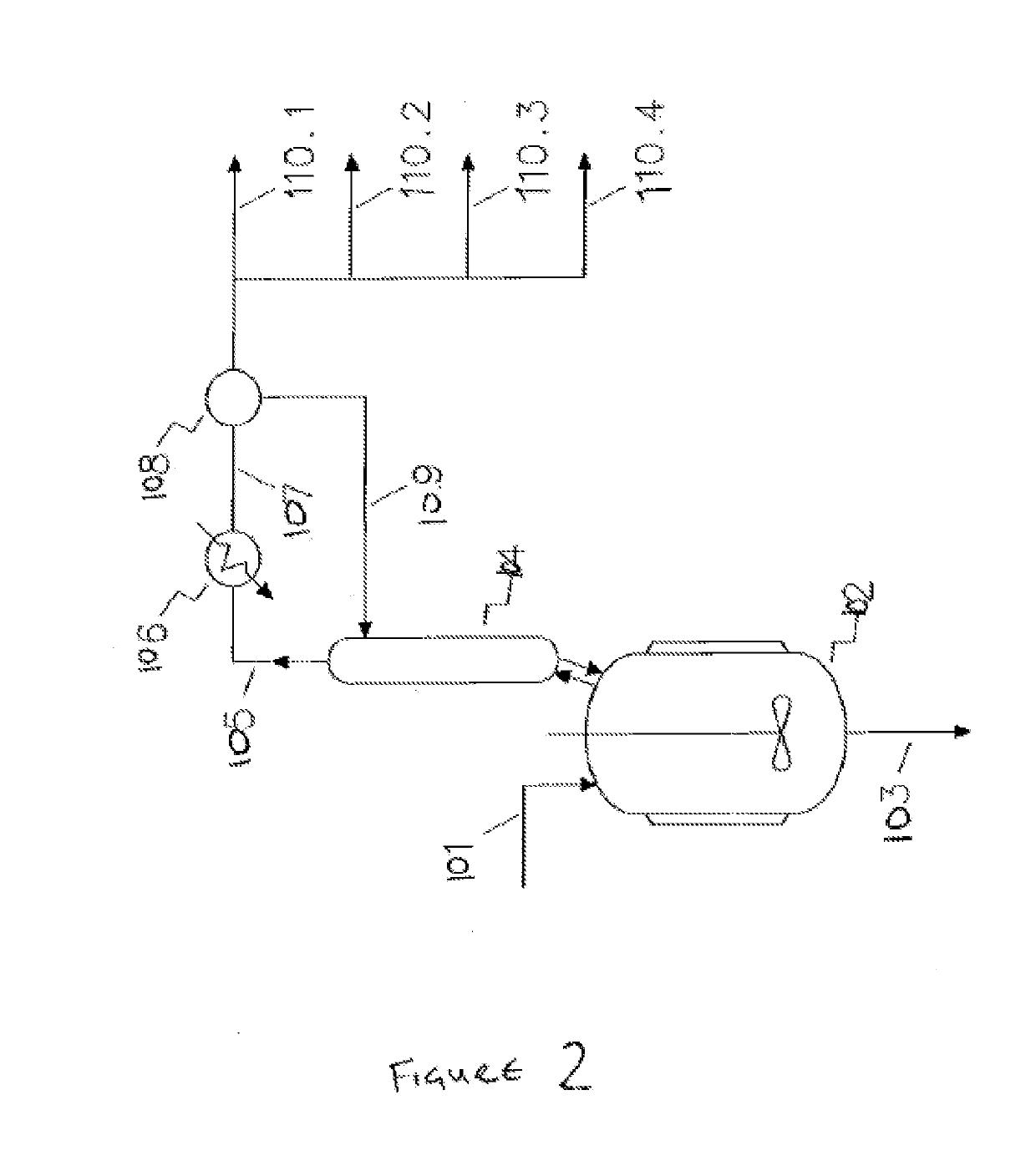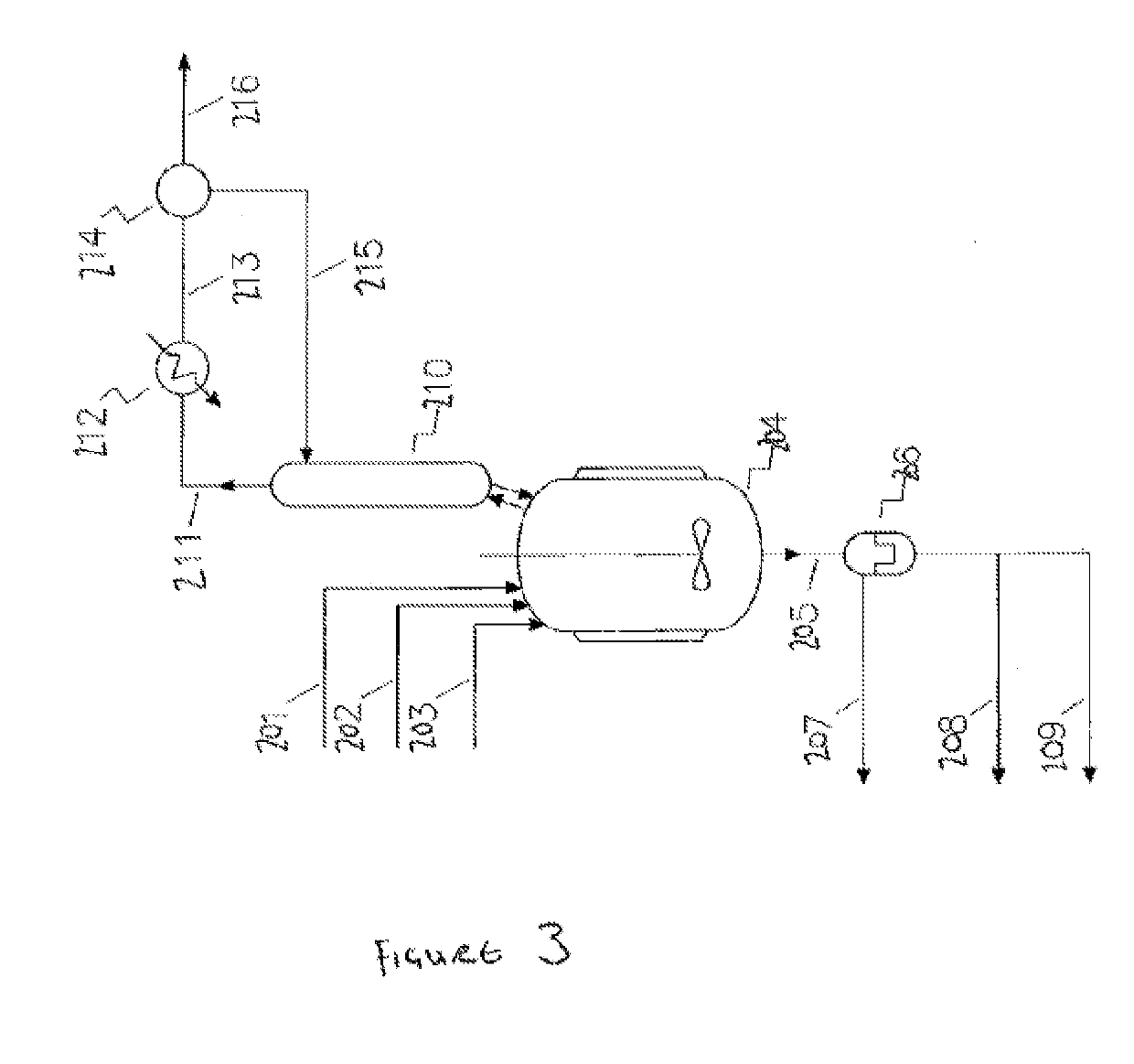Process for the manufacture of 2,3,3,3-tetrafluoropropene
a technology of tetrafluoropropene and tetrafluoropropene, which is applied in the field of preparation of halogenated hydrocarbons, preparation by hydrogen halide split-off, organic chemistry, etc., can solve the problems of reducing minimizing the yield of target compounds, and achieving high purity and purity. high
- Summary
- Abstract
- Description
- Claims
- Application Information
AI Technical Summary
Benefits of technology
Problems solved by technology
Method used
Image
Examples
specific examples
[0692]In the following specific processes for the fluorination of the 1,1,1,2,3-pentachloropropane (HCC-240db) feedstock (step 4) already known in the state of the art, which may be used at least partly as fluorination step 4 of the present process are summarized by way of example below. Patent application WO 2013 / 088195 of the present applicant, which is incorporated herein by reference. describes a catalytic fluorination of a 1,1,1,2,3-pentachloropropane (HCC-240db) feedstock with HF in the presence of catalyst preferably in a vapor phase to produce a reaction mixture comprising HCl, HF, 1,1,1,2,2-pentafluoropropane (HFC-245cb), 2-chloro-3,3,3-trifluoropropene (HCFO-1233xf) and 2,3,3,3-tetrafluoropropene (HFO-1234yf).
[0693]The first reaction step can be performed in a single reactor. The effluent stream exiting the reactor may optionally comprise additional components such as 1,1,1,2,2-pentafluoropropane (HFC-245cb) and unreacted HF.
[0694]The product stream of the first step (a) i...
examples 1 to 19
gh Purity 1,1,1,2,3-pentachloropropane (HCC-240db)
[0752]In the following examples 1 to 19 the process for the production of high purity 1,1,1,2,3-pentachloropropane is illustrated.
[0753]For the avoidance of doubt, where reference is made to units of pressure (kPa) herein it is the absolute value which is identified. Where values are presented as percentages herein, they are percentages by weight unless otherwise stated. Where the purity of a composition or material is presented by percentage or ppm herein, unless otherwise stated, this is a percentage / ppm by weight.
[0754]For clarity, Examples 1 to 7 exemplify or relate to the telomerisation reaction (and subsequent treatment steps) of step 1) of the HCC-240db production process, which is an optional step. Examples 8 to 12 exemplify or relate to the dehydrochlorination reaction (and subsequent treatment steps) of step 2) of the of the HCC-240db production process, which is an optional step. Examples 13 to 19 exemplify or relate to th...
example 1
tion of Catalytic Ability of Recovered Catalyst Using an Aqueous Treatment
[0755]Ethylene and carbon tetrachloride were reacted to produce 1,1,1,3-tetrachloropropane in the presence of catalyst which was either i) recovered from a reaction mixture using conventional distillation techniques, or ii) recovered from a reaction mixture using the inventive aqueous treatment step for catalyst described herein. The reaction mixture additionally comprised 1,1,1,3-tetrachloropropane (present in the recycle stream) and tetrachloropentane (a chlorinated alkane impurity commonly formed as a byproduct in the presence of telomerisation reactions between carbon tetrachloride and ethylene).
[0756]These test examples show that using the aqueous treatment step to recover catalyst, the performance of the catalyst is significantly higher as compared to catalyst recovered using conventional distillation techniques.
[0757]Gas chromatography was used to monitor the progress of the reaction.
Batchwise Arrangeme...
PUM
| Property | Measurement | Unit |
|---|---|---|
| atmospheric pressure | aaaaa | aaaaa |
| atmospheric pressure | aaaaa | aaaaa |
| atmospheric pressure | aaaaa | aaaaa |
Abstract
Description
Claims
Application Information
 Login to View More
Login to View More - R&D
- Intellectual Property
- Life Sciences
- Materials
- Tech Scout
- Unparalleled Data Quality
- Higher Quality Content
- 60% Fewer Hallucinations
Browse by: Latest US Patents, China's latest patents, Technical Efficacy Thesaurus, Application Domain, Technology Topic, Popular Technical Reports.
© 2025 PatSnap. All rights reserved.Legal|Privacy policy|Modern Slavery Act Transparency Statement|Sitemap|About US| Contact US: help@patsnap.com



